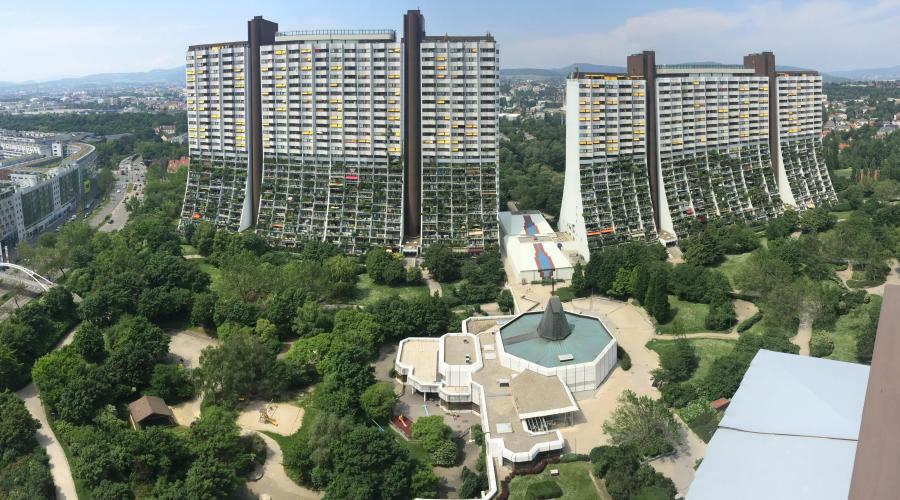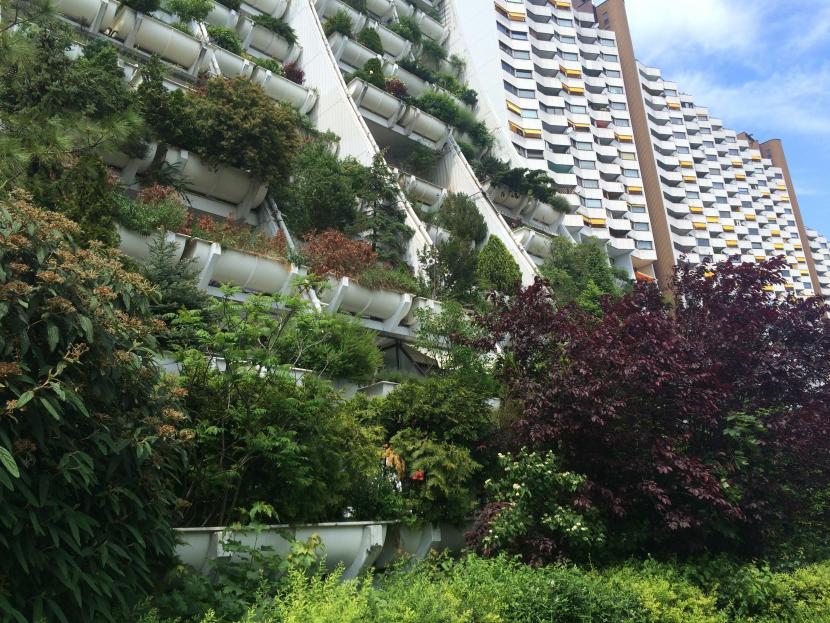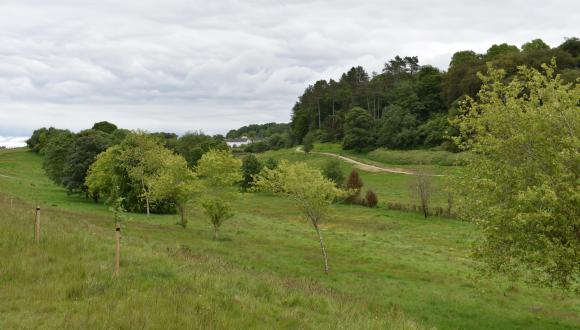
A Viennese green dream
If there was a green infrastructure contest for creative design, then you would expect to see Vienna’s Wohnpark Alt-Erlaa feature in the list of nominees. Alt-Erlaa is a green vision, one that demonstrates so many good things you have to pinch yourself to realise it is in essence a housing estate, not a private paradise.
Travel around six miles from the beautiful historic old centre of Vienna and you reach what has been called in some quarters a satellite town. That’s an understandable description, for although it is part of the Austrian capital it is almost self-contained.

A view out over the park, which is a residential and commercial complex in Vienna. © Bernhard Scharf of Vienna Council
There are over 3,000 homes here, 10,000 residents, and make no mistake this is high-rise living. But despite the presence of several 27-storey blocks, the overall impression is of a green and pleasant land. That’s because the first dozen storeys from the ground up have huge balconies that come complete with tree, shrub and greenery filled terraces. The complex may have reached for the sky, but it was firmly rooted in the nature and cloaked in a pleasantly varied array of plantlife.
Adding to the sensitive mix is the way that in between the housing blocks lie rolling landscaped grounds and winding paths. For those who live here, and those who travel past Alt Erlaa on their way in and out of Vienna, it’s a green delight. It isn’t just that nature has been placed central in this development, it slots into place alongside key social benefits such as sports halls, schools (if you include kindergartens there are over 12) a church, swimming pools and a shopping centre. It even has its own U-bahn station to make travelling into the centre of the city easy (and in daytime there is a train every 5 minutes). The area has a real sense of community, reflected in the fact that it has its own radio station.
It’s a popular place to live, with some estimates suggesting the waiting list takes a staggering five years to scale. The remarkably enduring vision belonged to the famous architect Harry Glück.
Born in Vienna in 1925 he believed that you had to think big to solve a chronic housing problem. However, he also held dear to the concept that you couldn’t compromise on quality or standard of living. The Viennese are in his debt. He blended environmental, social, cultural and commercial needs into a delightful architectural masterpiece. Some would say that Harry Glück reinvented the large housing estate.
Alt-Erlaa was constructed in two stages between 1968 and 1985. It was a big undertaking yet 40-years on it has stood the passage of time well and, crucially, is still popular amongst residents. There are studies which suggest that the satisfaction of residents living here is very high which is reflected in a waiting list to live in this development.
Green Infrastructure plays a huge role in that satisfaction level. Glück was clear that his plan would mean that people would be close to nature.

A housing and commercial complex. © Bernhard Scharf of Vienna Council
The planting was bold and ambitious. Large plants dominate, the intention is that these provide privacy and soften what could otherwise be a fairly severe concrete frontage. There are swathes of planting in front of the housing blocks too, stretching almost 170 metres from block to block.
The idea was to mirror what it would be like to live in a park. So the planting is similar to landscape parks in Vienna. Very diverse. The maintenance of the public area is done by professionals and part of the overall building maintenance plan. The private terrace gardens are up to the residents, who care themselves for their green oasis.
You struggle to see a car in this area. From the outset the aim was to advocate walking, using the U-bahn and cycling. Thus in front of the buildings you can easily park a cycle or a scooter, but cars have to park out of sight in underground car parks – and there is only one road in and out of this central garage.
Planning and a sympathetic housing policy come together superbly at Alt-Erlaa, but without those green touches it might not have been so successful. There is a natural harmony here, as classy and well-choreographed as the finest Viennese waltz.







